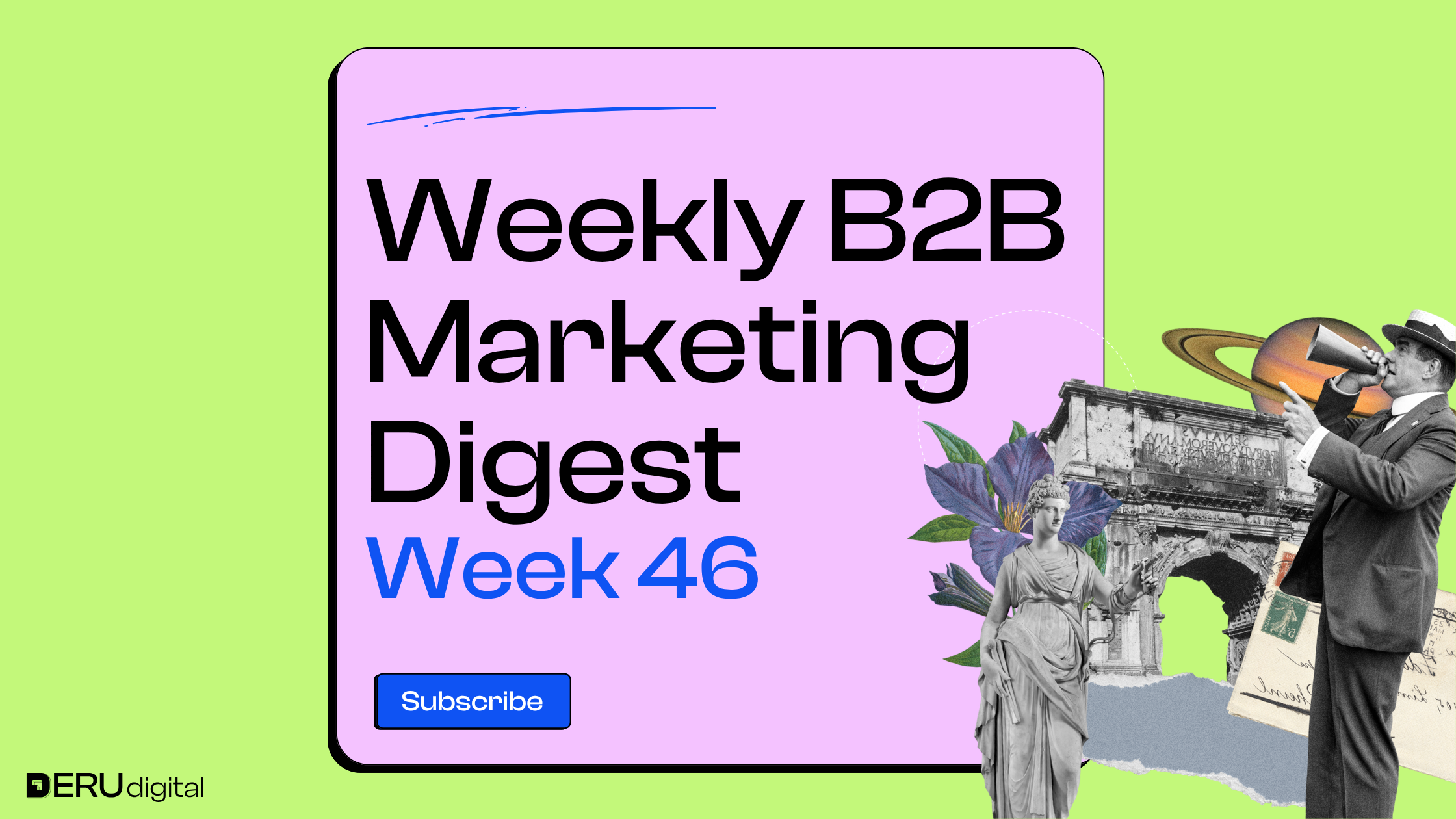INSIGHTS FROM EXPERTS ON LINKEDIN
Aleksandar Radosevic brings back his popular B2B SaaS homepage template, built around messaging, not design trends. He argues that clarity comes from understanding the customer’s job and their friction points, then guiding them clearly through the solution. Before touching layout or visuals, map out the real problem your product solves and anchor your message there.

Steffen Hedebrandt reveals that B2B companies are paying 34% more on average for branded search clicks on Google than they were a year ago. He attributes this spike to rising Google ad prices and the growing trend of competitors bidding on each other’s brand names. Dreamdata’s free B2B benchmark tool lets users compare their ad costs with peers and spot these trends in their own data.

Tim Davidson breaks down the weird results you sometimes see in one-to-one ABM campaigns on LinkedIn, like reaching 100 companies when you’re only targeting one. The culprit? Users with multiple current positions, which LinkedIn mashes together when matching job titles and companies. He shares simple fixes like excluding generic titles and irrelevant industries, but reminds marketers to understand their audience first so they don’t accidentally filter out key decision-makers.
Justyna Ciecierska, MSc explains that the right moment to invest in brand building depends on where your momentum starts – your personal profile, your product, or a bigger movement. If you’re scaling yourself, a personal-to-company brand shift makes sense; if the product speaks for itself, let it lead first. But if you’re introducing a whole new way of thinking, the brand has to come first, even if it takes longer to pay off.

Andreas Obel 🚀 says clicks don’t mean what they used to; what really matters now is trust, especially in today’s zero-click world, where people stay inside platforms like LinkedIn or TikTok. If your content only delivers value after a click, you’re losing. Instead, focus on delivering genuinely helpful, in-feed content where your audience already hangs out.

WHAT'S NEW IN THE INDUSTRY
While GenAI unlocks exciting new possibilities, it’s also quietly stoking anxiety, especially around privacy, job loss, and professional relevance. New data shows even GenAI optimists feel uneasy, revealing a deeper tension between progress and personal risk. For marketers, it’s a wake-up call: messaging needs to acknowledge this emotional undercurrent or risk missing the mark entirely.
Starting June 17, Google’s Smart and PMax campaigns will prioritize users more likely to take local offline actions like visiting stores, especially via Maps and Search. This means fewer but more valuable conversions – expect higher CPCs, but better in-store results. Advertisers should adapt bidding strategies, expand location coverage, and refresh creatives to stay ahead of the changes.


WhatsApp is turning its “Updates” tab into a business hub with promoted channels, paid subscriptions, and Status ads, all while keeping personal messages private. Businesses can now grow visibility and connect with 1.5 billion daily users without invading their inbox. It’s Meta’s most privacy-conscious push into monetization yet, and a big opportunity for brands to show up where people already are.

TikTok launched new generative AI tools that turn text prompts or product photos into polished five-second video ads, complete with lifelike avatars. Part of its Symphony suite, these tools are now also integrated with Adobe Express and WPP Open. The move makes it easier for marketers to scale content quickly and test creative, especially as TikTok faces mounting U.S. regulatory pressure.
Google Ads now supports Target Cost-Per-Click (tCPC) bidding in Demand Gen, letting advertisers automate click bidding while keeping a consistent average cost. Unlike conversion-based bidding, this strategy focuses purely on driving traffic, offering more control and predictability. It’s a solid option for brands prioritizing volume over post-click actions, though Google hasn’t officially announced a broader rollout yet.
Reddit unveiled two alpha tools that help brands tap into its massive trove of user conversations. Reddit Insights is a social listening tool for trend tracking and sentiment analysis, while Conversation Summary Add-ons place real Reddit posts under ads to boost engagement. Early tests show higher CTRs and better brand trust thanks to built-in social proof.
Meta just added a bunch of AI features to its Advantage+ suite to speed up content production and keep branding consistent. The updates include AI-generated video from images, automated brand styling, and tools to highlight key video moments, with more interactive features like voice AI and sticker CTAs on the way. Early results show a promising lift in return on ad spend for advertisers using the tools.

Google is integrating its AI video model Veo 3 into YouTube Shorts, letting users create full videos, visuals, sound and all, from simple text prompts. The move promises to make short-form content creation easier for brands and creators, but also raises concerns about content quality and originality. As AI-generated clips flood the platform, YouTube is working on safeguards like likeness protection tools to avoid misuse.
Google Ads has quietly changed a long-standing default: new Search campaigns no longer automatically include the Display Network, giving advertisers more control over budget allocation. This helps prevent unintentional spend on low-quality traffic and placements outside of Search results – a common pitfall for less experienced users. While not confirmed platform-wide yet, the update is a welcome move toward cleaner, more focused campaign setups.

A new Google Ads metric called “Conv. value (incl. predicted)” is showing up in dashboards, combining actual and estimated conversion values. It gives advertisers a forward-looking view of performance, especially helpful for longer sales cycles, though Google hasn’t explained exactly how it works yet. Until more details emerge, it’s a powerful but potentially risky data point for optimization decisions.

That’s the scoop for this week! If you found this valuable and any useful insights caught your eye, feel free to share them with your network.
Until next week!




